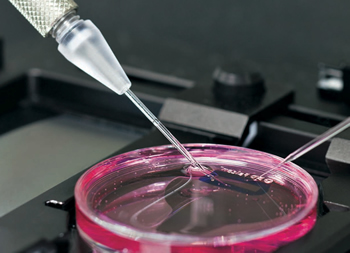
According to a new report sponsored byPharmaceutical Research and Manufacturers of America (PhRMA), 29 of its member companies invested an estimated $51.2 billion in R&D of new innovative treatments and cures. The figure is part of $600 billion the industry has invested in R&D since 2000, and represents the majority of all biopharmaceutical R&D spending — both public and private — in the United States.
The new R&D numbers, the result of a recent survey of PhRMA member companies, are highlighted in the newly released PhRMA 2015 Biopharmaceutical Research Industry Profile. Analysis of IP-intensive industries conducted by ndp│analytics shows that biopharmaceutical companies on average invest as much as six times more in R&D, relative to their sales, than the average US manufacturing firm. In 2014, PhRMA member companies invested nearly 24 percent of domestic sales into R&D.
“What the Industry Profile tells us — unequivocally — is that the commitment of America’s biopharmaceutical companies to solving the world’s most vexing medical challenges has never been more resolute,” said John J. Castellani, president and CEO, PhRMA, noting that the industry brought a record 51 new medicines to patients in 2014. More than 7,000 medicines are in development globally.
| R & D Average 2000-10 ($ billions) |
Average Annual Growth (%) | ||||
|---|---|---|---|---|---|
| 2000-10 | 2009-10 | 2005-08 | 2000-04 | ||
| All Manufacturing Industries | $ 140.3 | 4.2 % | -0.8 % | 7.0 % | 3.9 % |
| IP-Intensive | $ 116.7 | 4.3 % | -0.9 % | 7.0 % | 4.4 % |
| Pharmaceutical & Medicine | $ 31.6 | 14.4 % | 1.4 % | 11.2 % | 25.2 % |
| Others | $ 85.1 | 1.5 % | -2.1 % | 5.2 % | -0.3 % |

Site Selection’s New Plant Database shows 400 facility investments involving an R&D component since January 2013. Nearly 10 percent are associated with pharma or biopharma products, with at least that proportion accounted for by other life sciences sectors. Projects include investments by AstraZeneca in Frederick, Md. ($200 million, 300 jobs); Regeneron in Mount Pleasant, N.Y. ($100 million, 400 jobs); Catalent in Kansas City, Mo. ($30 million, 236 jobs); and H3 Biomedicine in Cambridge, Mass. (75 jobs).
“The road to bringing a new FDA-approved medicine to market is a long and formidable one,” said PhRMA. “Only 12 percent of drug candidates that enter clinical testing are eventually approved for use by patients. On average, it takes at least 10 years and more than $2.6 billion to bring a new medicine from the research pipeline to patients.”
The industry supports nearly 3.4 million US jobs, and the overall impact of the sector on the domestic economy is $789 billion annually.
Protections and Productivity
“This research demonstrates the clear correlation between technological advancement, job creation and economic growth,” said Nam D. Pham, Ph.D., report author and managing partner at ndp | analytics. “The enormous amount of resources IP-intensive industries [are] investing in R&D and human capital in order to invent and improve new products, services, and methods underscores the need for strong IP protections.”
Prior to founding ndp | analytics in 2000, Dr. Pham was Vice President at Scudder Kemper Investments in Boston, where he was responsible for research, asset allocations, and currency hedging for global and international bond funds. Before that he was Chief Economist of the Asia Region for Standard & Poor’s DRI; an economist at the World Bank; and a consultant to both the Department of Commerce and the Federal Trade Commission.

Based on official data from the National Science Foundation, the US Census Bureau, the US Bureau of Economic Analysis, and the International Trade Commission, the ndp report found that IP-intensive industries accounted for 83 percent of annual R&D spending across all U.S. manufacturing industries between 2000 and 2010, and R&D investment grew by 53 percent compared to 34 percent for non-IP-intensive industries. IP-intensive industries highlighted in the report include pharmaceuticals, semiconductors, computer & electronics, aerospace, medical equipment, transportation equipment, and petroleum.
From a productivity standpoint, IP-intensive industries produce more than triple the exports and double the output per employee. Additionally, workers earn about 50 percent higher wages than their non IP-intensive counterparts. Pharma employees earn 60 percent higher wages than the average for the manufacturing sector. Employment numbers also remained unchanged from 2000-2010 while other industries experienced job losses.

Among other findings, ndp discovered that IP-intensive industries represent a disproportionately large share of wage growth, export-led growth, and overall economic output relative to their share of employment. While representing 29 percent of workers in the manufacturing sector, IP-intensive manufacturing industries accounted for 59 percent of all manufacturing exports, 47 percent of all manufacturing output, 44 percent of all manufacturing economic value-added, and 37 percent of all manufacturing wages.
“Public policies that maintain incentives for innovation and encourage economic growth are critical to the future of our country’s manufacturing base,” Pham said.

